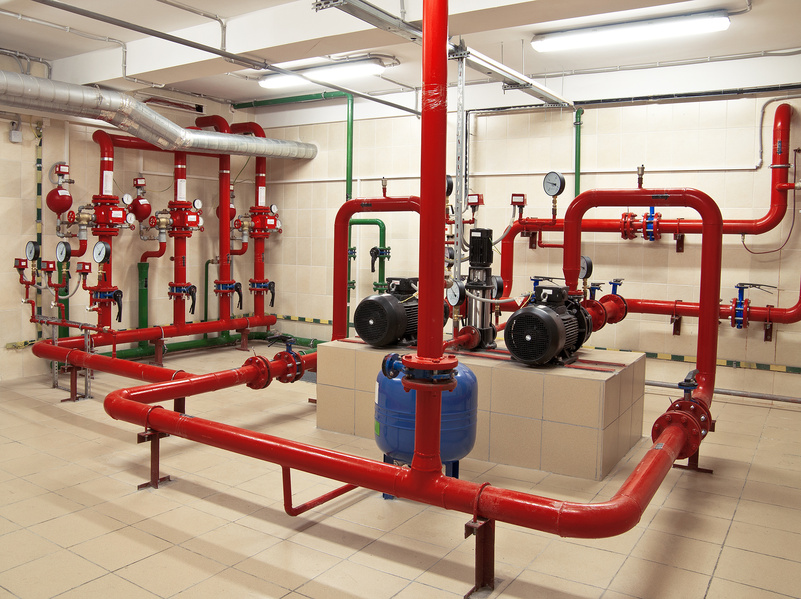
When you’re the property manager of one or more multi-storied buildings that house commercial businesses, data centers, hospitals or warehouses, you know how important it is to ensure that your tenants and their customers, clients or patients are in a safe environment. You also know how important it is that their records, data, and other property are protected as well as the building itself.
Fire Prevention Protocols and Personnel Training
With that in mind, if you’ve recently assumed management of these buildings, you’ll want to have a fire inspection service evaluate each floor to determine whether or not your fire protection systems are up-to-code and functioning optimally. At this time, it may be necessary to have an updated fire sprinkler installation.
Were you aware that only 35% of 119 businesses surveyed claimed to have any type of evacuation plan in the event of a fire? Common sense and safety protocols dictate that this figure should be at 100%.
Do your tenants have an evacuation plan in place? If not, then it would be considered part of your responsibility as the property manager to ensure they develop a plan as well as conduct regular drills.
It would also be important to encourage your tenants to designate several employees to undergo training. In the event of a fire, they would be prepared to take proper action. This would include knowing when to contact the fire department and what protocols to follow while waiting for them to respond.
Furthermore, when there are on-site personnel who are trained in how and when to respond during a fire, this can potentially prevent the fire from spreading. In addition to providing early warnings to the fire department, these trained individuals could also assist with evacuation procedures.
Fire Prevention Protocols and Building Renovations
There are specific protocols to follow when you’re the property manager of a building currently undergoing renovation. If the fire alarm or sprinkler system needs to be disabled during these renovations, the fire department needs to be contacted. This is especially important when these systems need to be disabled for more than a few hours within a 24-hour period.
If the building is a hospital or other type of medical facility, then the proper protocol is to establish a fire watch.
The Effectiveness of Fire Sprinkler Systems
Fire sprinklers are an effective system to extinguish as well as prevent the spread of many fires. According to the National Fire Protection Association, in buildings with fully-operational fire sprinklers throughout, there was no record of more than two fatalities.
In another study, when a fire was large enough to activate the sprinklers, they functioned 91% of the time. This study did not include buildings under construction or buildings without sprinklers in the areas where fires broke out.
When there is an early warning system and automatic sprinklers in place, it has been estimated that there have been 50% less injuries, fatalities, and property loss or damage.
The Importance of Fire Prevention Systems Maintenance
As aforementioned, it’s important to have trained personnel on site. Not only will they have the skill set to determine when to contact the fire department, they will also be trained to spot when a sprinkler system isn’t working properly. In the event that a sprinkler system is malfunctioning, they know when to contact maintenance to determine whether to provide a new fire sprinkler installation.
In approximately 44% of the fires that resulted when dry and/or wet fire prevention systems were in place, it was found this was due to poor or non-existent maintenance. Regular maintenance is essential in order to prevent potential loss of life, injuries, and property damage. A new fire sprinkler installation may be necessary at this time.
When wet and/or dry chemical systems were fully-operational, they were effective 69% of the time. When fires were substantial enough to activate these systems, they were effective 55% of the time.
In the case of structural fires, 81% activated when the fires were large enough to trigger these systems. Given those fires that were also large enough to activate these systems, 19% failed.
Is your building protected? Contact a fire protection contractor to make sure. It may be time to update with a new fire sprinkler installation.
